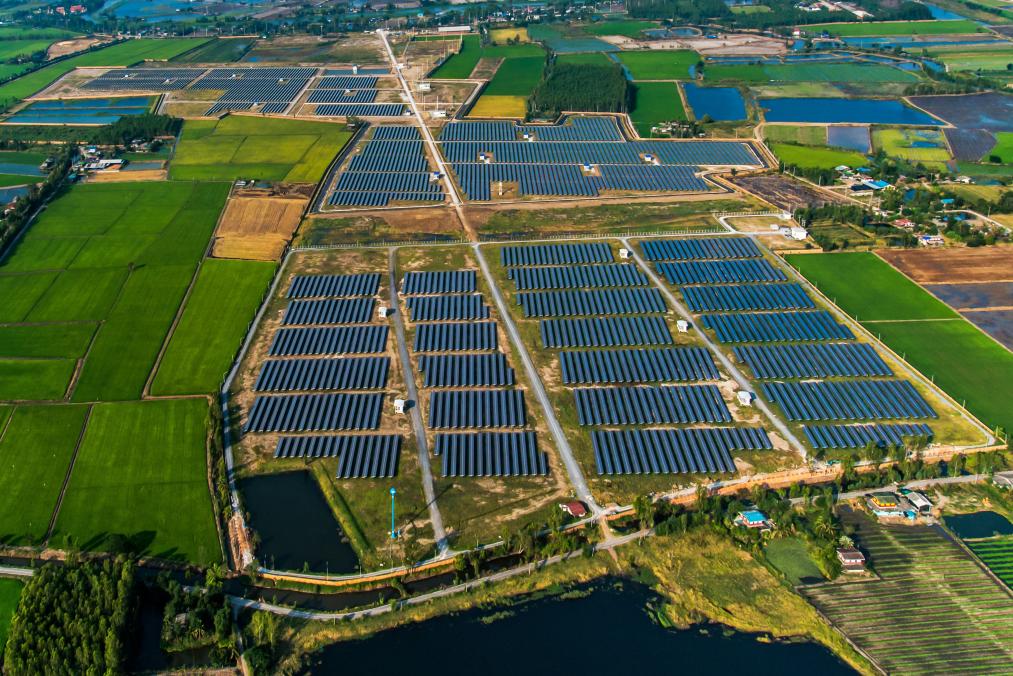
India and Southeast Asia are the largest markets for utility-scale solar auctions: study
Corporate PPAs and rooftop portfolios could also be sizeable segments.
Utility-scale solar auctions in India and Southeast Asia are identified to be the largest key target segments for the solar power sector as they are slated to reach additional capacity of 82GW and 21GW respectively by 2035, according to a study by consulting firm Roland Berger.
Factors that make these markets an opportunity for growth are its land accessibility and sourcing capabilities.
“Southeast Asia is set to require more than 250 GW of additional capacity, and India 580 GW. But under existing policies, countries are struggling to meet demand. Solar power offers a solution,” said Jeffry Jacob, Roland Berger partner for energy & utilities competence center.
The International Energy Agency (IEA) estimates that about 120 GW of new solar capacity and 80 GW of new wind capacity will come online in India by 2040. The country’s government is promising 100 GW of solar and 60 GW of wind installed capacity as early as 2022.
India’s plan to boost solar parks has so far added about 20 GW of new capacity, and the pipeline is flowing with several mega-projects in the 1 GW range. Such developments have seen offtake, or sale, prices fall as low as USD 0.0355 per kilowatt hour at auctions in 2018 – compared to prices hovering around USD 1 per kWh in 2015.
In contrast to India, installed capacity of solar in Southeast Asia amounts to a mere 5 GW, with most projects below the 50 MW size. This is despite Southeast Asia's attractive sunlight conditions. Irradiation averages 17.2 megajoules per square meter per day in the region, compared to 12.6 MJ/m2/day in Germany, which has 43 GW of solar capacity, and 16.2 MJ/m2/day in China, which has 126 GW of solar capacity.
Unfortunately, government plans for different Southeast Asian countries suggest that modern renewables may only play a marginal role in the region, with at most 35 GW of new solar capacity by 2040 compared to additional fossil fuel capacity of over 120 GW.

Projects backed by corporate power purchase agreements (PPAs) are also expected to become mainstream in both India and Southeast Asia, with a combined 19 GW of new capacity by 2035. Solar rooftop could come off as a sizeable segment as projects below 20 MV could boost capacity by 14W in 2035 as well.
Rural off-grid projects is expected to add up 21GW of additional capacity to India and some parts of Southeast Asia.
“Here the key will be to combine multiple offtakers, or buyers, for each project to ensure large and stable demand; that is, find users beyond residential customers, such as telecommunication tower companies, telecommunication operators, or commercial customers,” Jacob added.
In the Philippines and Thailand, where solar conditions are good and coal needs to be imported, the transition may happen in the next two years, while in Malaysia it may happen by 2025.

As a result of all this, and irrespective of local government policies, solar PV may become a prominent alternative to coal in Southeast Asia. Estimates based on economic potential suggest approximately 90 GW of new capacity by 2040 – much higher than the 35 GW capacity from aggregated government plans.























 Advertise
Advertise








